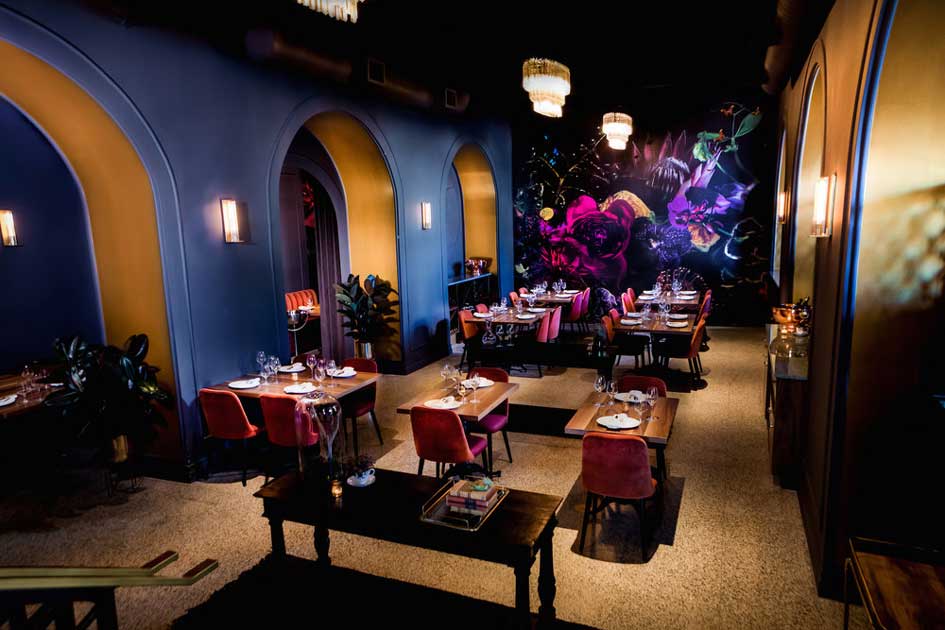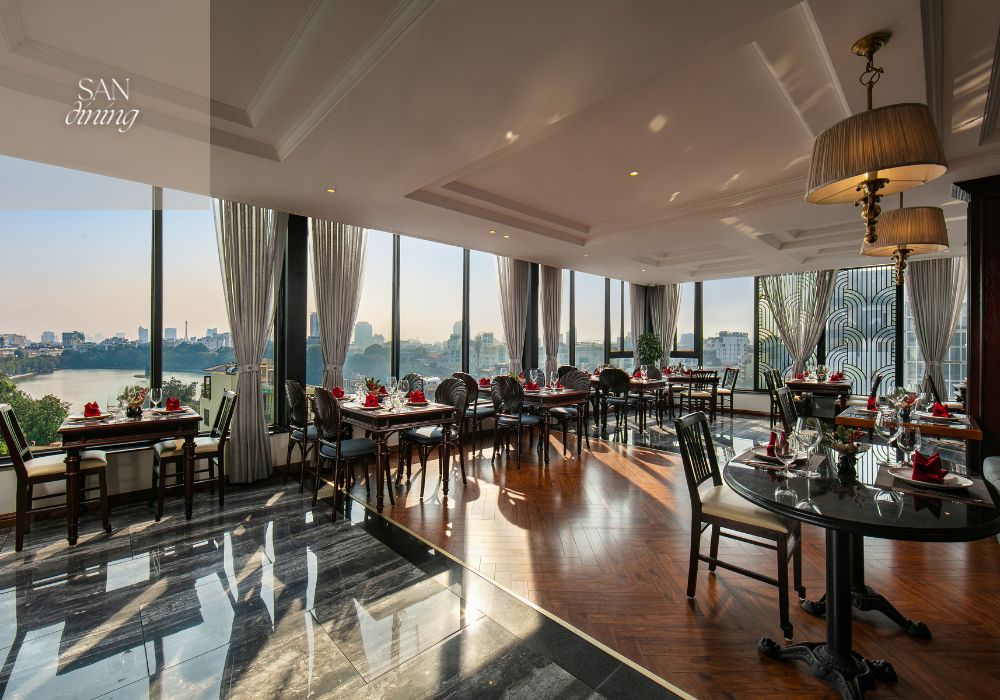Chinese Food Islamabad: Delight In Genuine Chinese Cuisine at its Best
Chinese Food Islamabad: Delight In Genuine Chinese Cuisine at its Best
Blog Article
Savor Genuine Oriental Food With a Pan-Asian Twist for a Cooking Experience
Beginning on a culinary trip via authentic Oriental cuisine, boosted with a Pan-Asian spin, offers an one-of-a-kind opportunity to explore the rich tapestry of tastes that define the region's varied cooking customs. As you contemplate these enticing recipes, consider the cultural narratives and historic influences that shape them, each bite supplying a story waiting to be discovered. Best ambiance restaurants Islamabad.

Discovering Pan-Asian Flavors
In the world of international gastronomy, Pan-Asian cuisine stands apart for its amazing diversity and the harmonious interaction of tastes from various Eastern cultures. This culinary approach commemorates the special components and rich practices found throughout the continent, producing a tapestry of preferences that is both rewarding and appealing. Secret to Pan-Asian food is its capability to balance different flavors-- sweet, salty, spicy, and sour-- while highlighting the quality and high quality of each ingredient.
From the umami-rich soy sauce of Japan to the fiery chili peppers of Thailand, Pan-Asian food offers a considerable palette of flavors. These aspects are commonly incorporated in creative methods, boosting recipes with layers of intricacy. For circumstances, the usage of fragrant herbs such as lemongrass and cilantro, typical in Vietnamese and Thai food, adds a revitalizing illumination to dishes, while the incorporation of coconut milk delivers a creamy, abundant texture.
The focus on fresh produce and aromatic flavors makes certain that each meal is not only a feast for the taste but also for the detects. Pan-Asian cuisine welcomes diners to start a culinary trip, checking out the large and varied landscapes of Asian gastronomy with every bite.
Fusion Recipes to Attempt
While Pan-Asian food is celebrated for its traditional tastes, the contemporary cooking landscape is increasingly welcoming combination meals that blend these timeless components with impacts from other regions. This ingenious strategy not just honors the rich heritage of Oriental cookeries however likewise introduces novel preference experiences that interest modern tastes.
A prime example of such a blend dish is the Korean-Mexican taco, where marinated bulgogi beef is wrapped in a warm tortilla, topped with kimchi and a spicy gochujang-infused salsa. This combination marries the bold, mouthwatering tastes of Korea with the lively, fresh elements of Mexican cuisine. Similarly, sushi burritos have actually gained popularity, joining together the fragile virtuosity of Japanese sushi with the hearty, hand-held ease of a burrito, commonly featuring fusion components like tempura shrimp and avocado with a drizzle of wasabi mayo.
One more noteworthy meal is Thai curry ramen, which infuses the velvety, fragrant seasonings of Thai curry right into the reassuring brew of traditional Japanese ramen, producing a harmonious blend that tantalizes the senses. These blend meals expand past mere uniqueness; they represent a culinary discussion in between cultures, motivating exploration and advancement worldwide of Pan-Asian food.
Necessary Components and Seasonings
To absolutely value Pan-Asian food, one have to recognize the essential ingredients and seasonings that form its structure. This varied culinary style draws from a rich tapestry of Eastern practices, utilizing a harmonious blend of appearances and tastes.
Aromatic elements are critical, with lemongrass, ginger, and garlic being common across numerous Pan-Asian recipes. These ingredients supply an aromatic base that boosts the intricacy of flavors. Seasonings such as star anise, cardamom, and cinnamon present warmth and personality, echoing impacts from regions like China and India.

Food Preparation Methods and Tips
Grasping the art of Pan-Asian cuisine requires experience with its unique food preparation techniques, each adding to the lively tapestry of flavors this culinary custom is commemorated for. Central to these approaches is the stir-fry, a fast food preparation strategy that maintains the dietary integrity and brilliant shades of active ingredients. Making use of a frying pan, the stir-fry method enables for also warm circulation, essential for accomplishing the particular appearance and taste equilibrium of Pan-Asian recipes.
Another fundamental technique is steaming, particularly prevalent in Chinese cuisine. This gentle method maintains the natural tastes and nutrients of active ingredients, making it perfect for seafood and vegetables. Dumplings, a precious staple, often take advantage of steaming, resulting in soft, delicious appearances.
Barbecuing, also indispensable, gives great smoky depths to recipes such as Korean bulgogi or Japanese yakitori (Romantic restaurants Islamabad). This strategy usually includes seasoning components, permitting tastes to penetrate deeply prior to food preparation over an open flame or warm plate
Last but not least, mastering the art of stabilizing flavors-- sweet, sour, salty, bitter, and umami-- is critical. Appropriately layering these elements can boost a recipe from normal to remarkable, using a facility and pleasing cooking experience that personifies the essence of Pan-Asian food.
Eating Experiences Worldwide
Around the world, Pan-Asian cuisine supplies an unparalleled eating experience, commemorated for its abundant tapestry of flavors and vivid presentations. This cooking phenomenon has actually gone beyond cultural limits, recording the hearts and tastes buds of food enthusiasts worldwide. In cosmopolitan cities like New York, London, and Sydney, Pan-Asian restaurants function as melting pots where cooking traditions from Thailand, Japan, China, and beyond converge, supplying diners with an eclectic mix of recipes that highlight the area's diversity.
The international allure of Pan-Asian cuisine hinges on its capability to use both credibility and development. Chefs skillfully marry conventional components such as lemongrass, soy sauce, and miso with contemporary techniques, leading to meals that are both refreshingly brand-new and acquainted. This fusion permits restaurants to start a cooking trip that values heritage while welcoming modernity.
Furthermore, dining experiences are raised with thoughtfully developed atmospheres that reflect the values of Pan-Asian aesthetic appeals. From minimalist Japanese-inspired interiors to Go Here vibrant Thai-themed spaces, each dining establishment provides a distinct ambiance that complements the culinary offerings. Therefore, patrons are not merely eating a dish but partaking in a here social experience, making Pan-Asian eating a really global phenomenon.
Conclusion
The exploration of Pan-Asian food provides an extensive understanding of the elaborate interplay of flavors and cooking customs across Asia. By embracing fusion recipes such as Thai curry ramen and sushi burritos, the cooking journey not just highlights the adaptability of typical active ingredients however also showcases innovative modern strategies. This gastronomic experience, enriched by cooking techniques and important seasonings, gives an unique chance to value the social diversity and cooking creativity that specify Pan-Asian cuisine on a global range.
Getting started on a culinary trip through authentic Eastern cuisine, boosted with a Pan-Asian twist, provides a special opportunity to explore the abundant tapestry of tastes that define the area's diverse cooking practices.In the realm of international gastronomy, Pan-Asian food stands out for its impressive diversity and the unified interplay of flavors from various Eastern cultures. Secret to Pan-Asian cuisine is its capacity to balance contrasting tastes-- pleasant, salty, spicy, and sour-- while highlighting the quality and quality of each component.

Report this page